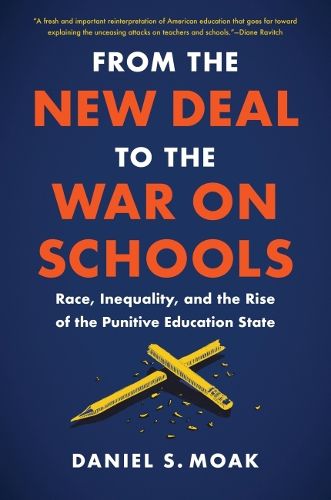Readings Newsletter
Become a Readings Member to make your shopping experience even easier.
Sign in or sign up for free!
You’re not far away from qualifying for FREE standard shipping within Australia
You’ve qualified for FREE standard shipping within Australia
The cart is loading…






In an era defined by political polarization, both major U.S. parties have come to share a remarkably similar understanding of the education system as well as a set of punitive strategies for fixing it. Combining an intellectual history of social policy with a sweeping history of the educational system, Daniel S. Moak looks beyond the rise of neoliberalism to find the origin of today’s education woes in Great Society reforms.
In the wake of World War II, a coalition of thinkers gained dominance in U.S. policymaking. They identified educational opportunity as the ideal means of addressing racial and economic inequality by incorporating individuals into a free market economy. The passage of the Elementary and Secondary Education Act (ESEA) in 1965 secured an expansive federal commitment to this goal. However, when social problems failed to improve, the underlying logic led policymakers to hold schools responsible. Moak documents how a vision of education as a panacea for society’s flaws led us to turn away from redistributive economic policies and down the path to market-based reforms, No Child Left Behind, mass school closures, teacher layoffs, and other policies that plague the public education system to this day.
$9.00 standard shipping within Australia
FREE standard shipping within Australia for orders over $100.00
Express & International shipping calculated at checkout
In an era defined by political polarization, both major U.S. parties have come to share a remarkably similar understanding of the education system as well as a set of punitive strategies for fixing it. Combining an intellectual history of social policy with a sweeping history of the educational system, Daniel S. Moak looks beyond the rise of neoliberalism to find the origin of today’s education woes in Great Society reforms.
In the wake of World War II, a coalition of thinkers gained dominance in U.S. policymaking. They identified educational opportunity as the ideal means of addressing racial and economic inequality by incorporating individuals into a free market economy. The passage of the Elementary and Secondary Education Act (ESEA) in 1965 secured an expansive federal commitment to this goal. However, when social problems failed to improve, the underlying logic led policymakers to hold schools responsible. Moak documents how a vision of education as a panacea for society’s flaws led us to turn away from redistributive economic policies and down the path to market-based reforms, No Child Left Behind, mass school closures, teacher layoffs, and other policies that plague the public education system to this day.